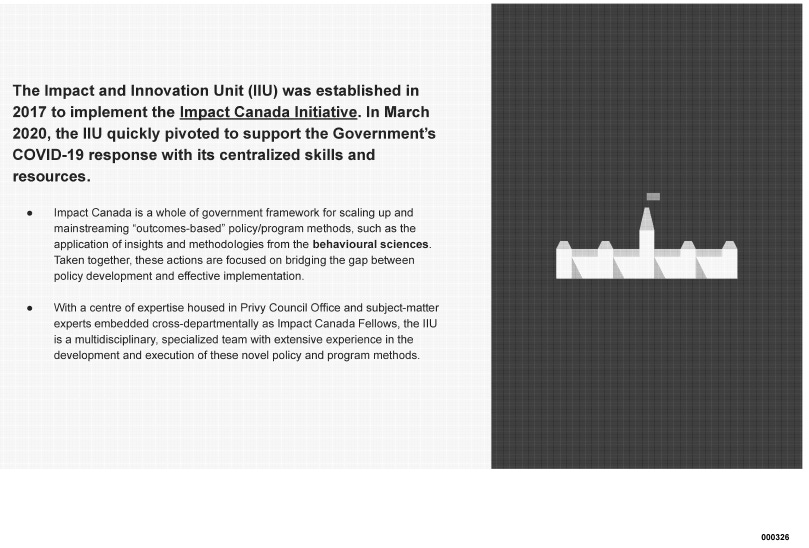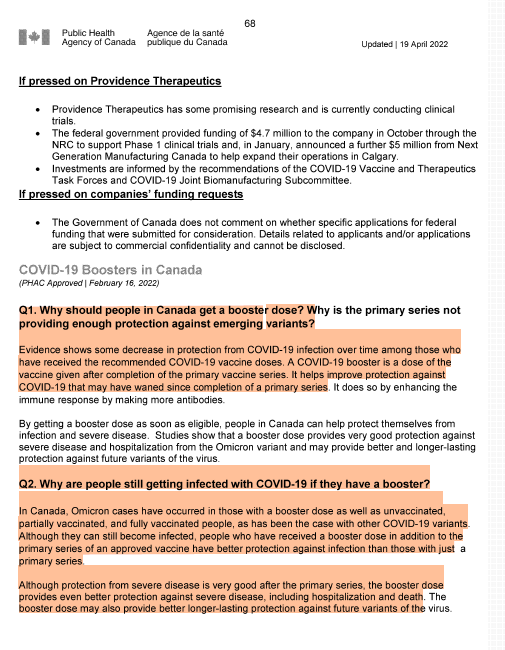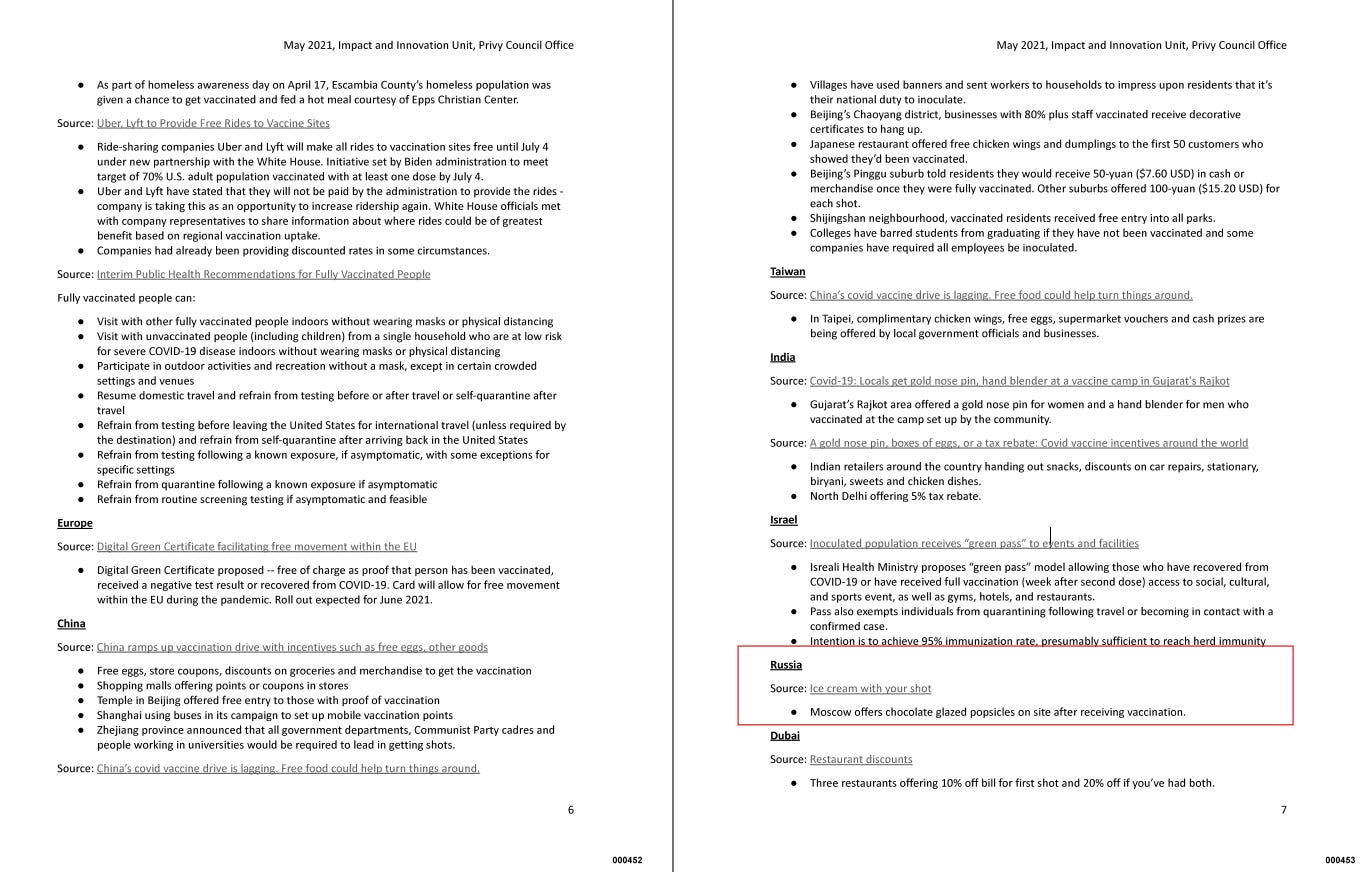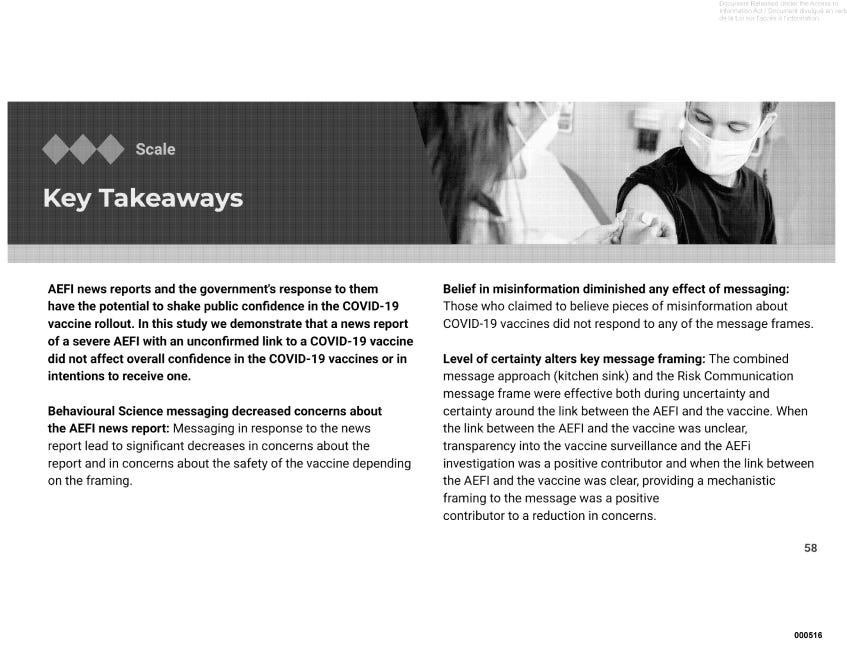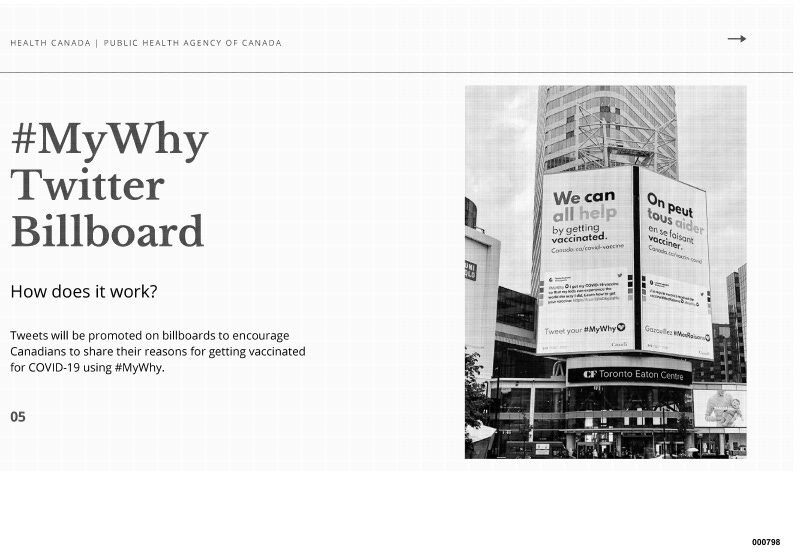Follow-Up: Deep Dive into ATIP 2022-00115 (OPC) - Behavioural Science and Vaccine Communication
Updated with new references.
In my previous article, I began to unpack the contents of the Access to Information and Privacy (ATIP) request A-2022-00115:
Organization: Privy Council Office
Year: 2023 Month: May
Request Number: A-2022-00115
Request Summary: IIU [ Impact and Innovation Unit ] insight reports, briefing notes, memos and media lines related to vaccination and misinformation from May 2, 2021 to June 6, 2022.
Disposition: Disclosed in part
Number of pages: 2530
This request revealed over 2,500 pages of documentation showing the extensive work carried out by behavioural scientists within the Office of the Privacy Commissioner (OPC), in collaboration with their counterparts at the Public Health Agency of Canada (PHAC). The goal of this partnership? To develop "Winning Communication Strategies" for government departments on vaccine-related topics, particularly around COVID-19 vaccines.
What struck me most was the significant investment of government resources into this relatively new field—Behavioural Science. It appears that there may be more behavioural scientists within the Government of Canada (GC) working on, publishing, and discussing the safety and efficacy of COVID-19 vaccines than there are subject-matter experts (SMEs) who are specifically trained in vaccines or have evaluated them scientifically. The documentation paints a clear picture of a deliberate effort to shape the public narrative on vaccination, potentially even overriding post-marketing data that questioned the “safe and effective” slogan about these new kind of vaccines.
Below are just a few additional highlights showcasing the substantial work done by these behavioural scientists ahead of the vaccine rollouts—efforts aimed at ensuring Canadians would accept vaccination, regardless of what the data might later reveal about the vaccines' performance or safety.
(UPDATED) Official references:
https://impact.canada.ca/en/behavioural-science
The Rise of Behavioural Science in Government
The shift towards prioritizing behavioural science expertise over biomedical expertise seems to have taken root most prominently with the creation of PHAC, which, as many of us know, was formed largely in response to WHO-own recommendations. But it didn’t stop there. The creation of the Impact and Innovation Unit (IIU) within the Privy Council Office (PCO) further cemented this shift. These two teams worked closely together to craft "Winning Communication Strategies" that could address any unfavorable questions or issues that arose in the aftermath of mass vaccination campaigns.
All this I learned from the ATIP 2022-00115 (OPC) response.
A Special Thanks to Volunteers who processed the document
I'd like to extend my deepest gratitude to the dedicated team of professionals and concerned Canadians from the Canadian Citizens’ Care Alliance and Political Scorecards Canada. Their efforts in meticulously OCR-scanning and breaking down this 2,500-page report into manageable, readable segments have made it accessible for all Canadians to review and analyze on Digital Freedom Canada cloud. I know they are still processing this and many other equally rich and sizable ATIP documents, with the goal of creating easily viewable files complete with navigable tables of contents for each one.
Thanks to them, we can now better understand the extensive role that behavioural science played (and continues to play) in shaping public opinions in support of health policies in Canada. Without their work, this information might have remained hidden, as it’s not something typically covered by mainstream media or official channels, is it?
Learn More About Behavioural Science and Its Role During the Pandemic
I encourage everyone to explore this emerging field of Behavioural Science and the profound role it has played in our everyday lives, particularly in the context of COVID-19. The full response to ATIP 2022-00115, complete with all its extracted decks and communications, is available on [Digital Freedom Canada cloud].
To pique your curiosity, below are some teaser screenshots from the decks and communications. These highlight the scale and depth of the work carried out by behavioural science professionals employed by the GC. Be prepared to be impressed by the level of their influence.
P.S. A Historical Parallel to Consider
While the work of behavioural scientists in the public sector is often framed as a means to "nudge" society toward healthier and safer behaviors, it’s important to reflect on how the shaping of public opinion has played out in history. One particularly stark and troubling parallel can be drawn from the rise of the Nazi regime in Germany. Many educated and well-meaning Germans were swept into supporting what, in retrospect, was an unspeakably horrific ideology. How could this happen? It wasn’t simply a matter of propaganda—it was a concerted, highly orchestrated effort to manipulate the public psyche.
Joseph Goebbels, Hitler's close partner and the mastermind behind Nazi propaganda, became infamous for his mastery of mass indoctrination techniques. Through relentless messaging on the radio and other media channels, he helped the regime control the narrative, vilifying any dissenters and criminalizing those who failed to demonstrate sufficient zeal for the Nazi cause. While this comparison is undoubtedly extreme, it serves as a chilling reminder of how governments can use similar tactics to steer public opinion in ways that may not always align with the truth or the public’s best interests.
In a more contemporary context, we see a softer, yet persistent, effort by governments—such as in the case of Canada’s COVID-19 vaccination campaign—to shape public opinion through behavioural science techniques. The sheer investment of resources into ensuring Canadians embraced the vaccine, regardless of any emerging post-marketing data, echoes the use of psychological operations (psy-ops) seen throughout history.
When legitimate questions arose about government actions—whether regarding vaccine safety, efficacy, or the mandates themselves—those who voiced dissent (like the Canadian trucker supporters) were often met not with thoughtful debate, but with hostility and intolerance from their fellow citizens. It’s troubling to think that so many well-meaning, educated Canadians could react with such intensity, rejecting critical questions in favor of a narrative they had been led to accept uncritically. It’s a sad parallel to draw, but one that underscores the immense power of behavioural science in shaping societal beliefs and behaviors.
As we move forward, it is crucial to remain vigilant and reflective about the tools governments use to influence public opinion, ensuring they are employed with transparency and accountability, rather than as a means to suppress legitimate debate or dissent.
Highlights from ATIP 2022-00115 (OPC) response
1. When it all started
The year 2017, when the Impact and Innovation Unit was established within the Privy Council Office (PCO) (see slide below), could be seen as the starting point for laying the foundation to manage public opinion ahead of the pandemic. However, one could argue that the groundwork was actually laid earlier, in 2006, when the Public Health Agency of Canada (PHAC) was created under the Harper government. As documented here, PHAC essentially became a domestic outpost of the World Health Organization (WHO) - designated National Focal Point (NFP) [see official PHAC site], tasked with implementing WHO’s International Health Regulations (IHR) through mechanisms like the Quarantine Act and Public Health Acts. It is therefore unsurprising that WHO recommendations seem to be the primary (if not the only) source informing the development of PHAC and PCO strategies.
Examples of recommended responses to some anticipated difficult questions:
Russia among most covid vaccination pushing countries. - Note to my Russia-Supporting “Freedom Fighters”: Think Again!
As seen in the ATIP response (see image below, Section "Strategies to Promote Vaccination"), Russia was actually one of the first countries in the world to incentivized vaccination among children by offering chocolate popsicles to those who got the shot. It was also one of the first to introduce a vaccinated-only QR code system for its citizens, which I wrote about awhile ago. Now, somehow everyone seemed to forget about it - believing Russia’s current narratives that portray Russia as anti-vaccine, anti-mandate, and anti-globalist force. It was only with start of the military invasion to Ukraine that the Russian government realized that changing its vaccine/mandate stance is the best way to manipulate “freedom fighters” around the world into supporting a war that has already caused thousands of deaths and injuries of innocent people in the neighbouring country.
Special focus on managing information related to AEFI
Introduction of the term “Winning Communication Strategies” to deal with Severe Adverse Events Following Immunization
Engaging News Media
Taking WHO “resources to support nations”.
Monthly COSMO analysis reports with recommedations - starting April 2020
Use of Social media and Effective Imagery - “Hugs are on the Horizon”
v
s
Projects leaders. Note: Most of them have Ph.D. degrees. So you should be able to find more about their research on the internet.






